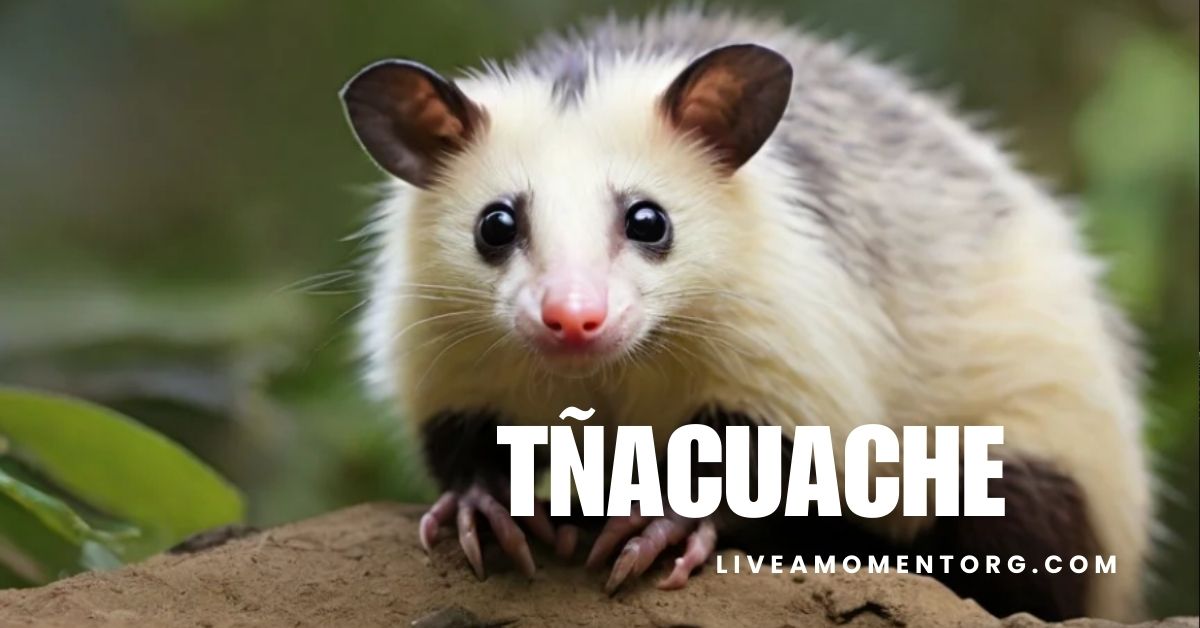Tñacuache: The Fascinating Opossum of the Americas
The tñacuache, known in English as the opossum, is a unique and captivating creature found throughout the Americas. This marsupial has distinct features and behaviors that make it an essential part of its ecosystem. In this article, we will explore the tñacuache’s characteristics, habitat, behavior, and its vital role in the environment. We will also delve into its cultural significance and answer some frequently asked questions about this intriguing animal.
What is a Tñacuache?
The tñacuache, or opossum, belongs to the order Didelphimorphia and is the only marsupial native to North America. It has a long, pointed snout, large ears, and a prehensile tail, which allows it to grasp branches and other objects. Tñacuaches have a greyish-white fur coat, with darker patches on their ears and feet. They are typically about 15 to 20 inches long, excluding their tails, which can add another 10 to 15 inches.
Physical Characteristics
- Size: The tñacuache can grow to about 15 to 20 inches in length, with a tail that can be as long as its body.
- Color: Their fur is mostly greyish-white, with a lighter underside and darker feet and ears.
- Tail: The prehensile tail is hairless and is used for balance and support when climbing.
Behavior and Adaptations
The tñacuache is known for its unique behavior, particularly its ability to “play dead” when threatened, a defense mechanism called thanatosis. This reaction can deter predators, as the animal appears unappetizing or sick. The tñacuache is nocturnal, meaning it is primarily active at night, which helps it avoid many predators.
Habitat of the Tñacuache
The tñacuache thrives in a variety of environments, from forests to urban areas. It is adaptable and can be found in many different habitats, including:
- Woodlands: The tñacuache prefers areas with dense vegetation, where it can easily find food and shelter.
- Urban Areas: As cities expand, tñacuaches have adapted to live alongside humans, scavenging for food in garbage and gardens.
- Wetlands: They are also found near streams and ponds, which provide ample food sources.
Geographic Distribution
Tñacuaches are found throughout North America, from southern Canada to the northern regions of South America. They are most commonly seen in the southeastern United States and are also prevalent in Mexico and Central America.
The Diet of the Tñacuache
The tñacuache is an opportunistic omnivore, meaning it eats a variety of foods based on availability. Its diet includes:
- Fruits and Vegetables: Tñacuaches enjoy fruits, nuts, and seeds, often foraging for ripe berries and fallen fruit.
- Insects: They are known to eat insects such as beetles, crickets, and caterpillars.
- Carrion: Tñacuaches play a crucial role in the ecosystem as scavengers, consuming dead animals and helping to keep the environment clean.
- Small Animals: Occasionally, they will eat small mammals, birds, and even eggs.
Feeding Behavior
Tñacuaches use their keen sense of smell to locate food. They are also known for their dexterity, using their front paws to manipulate food items and extract them from crevices.
The Tñacuache’s Role in the Ecosystem
The tñacuache plays an essential role in its ecosystem, contributing to biodiversity and ecological balance. Some of its key roles include:
Scavenger
As scavengers, tñacuaches help to clean up the environment by consuming dead animals. This behavior prevents the spread of disease and helps maintain a healthy ecosystem.
Pest Control
Tñacuaches are beneficial for controlling insect populations. By feeding on insects and small rodents, they help keep these populations in check, which can be advantageous for agriculture and gardens.
Seed Dispersal
While feeding on fruits, tñacuaches inadvertently assist in seed dispersal. The seeds pass through their digestive systems and are deposited in new locations, promoting plant growth and diversity.
Cultural Significance of the Tñacuache
In many cultures, the tñacuache holds significant symbolism. It is often viewed with curiosity and, at times, disdain due to its scavenging habits. However, it is also admired for its adaptability and resilience.
In Folklore
The tñacuache appears in various folktales and myths across the Americas. Some stories depict the animal as clever and resourceful, while others portray it as a trickster.
In Native American Culture
In Native American culture, the tñacuache is sometimes seen as a symbol of survival and adaptability. Its ability to thrive in different environments is admired and respected.
Common Misconceptions About Tñacuaches
Despite their ecological importance, tñacuaches are often misunderstood. Here are some common misconceptions:
Myth: Tñacuaches are Dangerous
Many people believe that tñacuaches are aggressive or dangerous. In reality, they are generally shy and prefer to avoid confrontations. When threatened, they often resort to playing dead rather than attacking.
Myth: Tñacuaches Carry Diseases
While tñacuaches can carry diseases, such as leptospirosis and tularemia, the risk of transmission to humans is low. They are more beneficial to the environment than harmful.
Myth: Tñacuaches are Pests
Although they may rummage through trash, tñacuaches play a vital role in controlling pest populations and cleaning up carrion. They can be seen as allies in maintaining ecological balance.
How to Coexist with Tñacuaches
If you live in an area where tñacuaches are common, here are some tips for coexisting peacefully with these fascinating creatures:
Secure Garbage
To prevent tñacuaches from rummaging through your trash, secure your garbage cans with tight-fitting lids. This will help keep food sources away from them.
Create a Barrier
If you have a garden, consider building fences or using natural deterrents to keep tñacuaches from entering your yard.
Leave Them Be
If you encounter a tñacuache, it’s best to leave it alone. They are generally harmless and will move on if not threatened.
Frequently Asked Questions (FAQs)
What is a tñacuache?
The tñacuache, or opossum, is a marsupial native to the Americas, known for its unique characteristics and behaviors.
Are tñacuaches dangerous to humans?
No, tñacuaches are generally shy and avoid confrontation. They prefer to play dead rather than attack when threatened.
What do tñacuaches eat?
Tñacuaches are omnivores and eat a variety of foods, including fruits, insects, carrion, and small animals.
How do tñacuaches help the environment?
Tñacuaches play a crucial role as scavengers, pest controllers, and seed dispersers, helping to maintain ecological balance.
Can tñacuaches be pets?
While tñacuaches can be kept as pets in some areas, they have specific needs and require proper care and habitat. It’s essential to research local laws and consider adopting from a rescue or sanctuary.
Conclusion
The tñacuache is a remarkable creature that plays an essential role in the ecosystems of the Americas. Its unique adaptations, behaviors, and ecological contributions make it a fascinating subject of study. By understanding and appreciating the tñacuache, we can learn to coexist with this incredible marsupial and ensure that it continues to thrive in our environment. Whether admired for its cleverness, adaptability, or its role as a scavenger, the tñacuache remains a vital part of the biodiversity that enriches our world.







